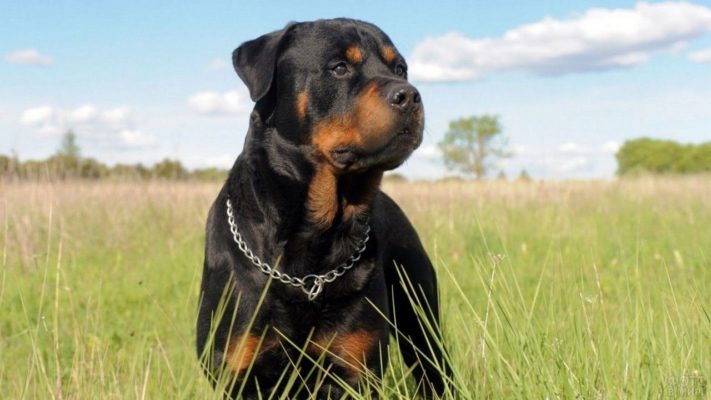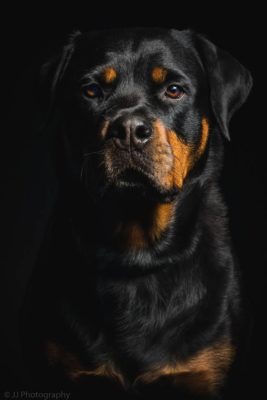Rottweiler

The breed is mainly famous for its inimitable zeal for work and desire to help the owner. It is not for nothing that Rottweilers were also called the “dog of one master”, because they are very attached to the man. Rottweiler dog is undeniably a mixed dog. He lives with qualities that are difficult to combine: he is a dangerous and ruthless opponent, a protector and guard, but also an affectionate and loyal friend.
Table of Contents
Breed Information
| Another Name | Rottweiler Metzgerhund |
| Origin | Germany |
| Height | Males 61-68 cm Females 56-63 cm |
| Weight | 43-52 kg |
| Fur | Short |
| Color | Black, mahogany |
| Lifespan | 9-10 years |
| FCI Classification | Pinscher and Schnauzer – Molossoid and Swiss Mountain and Cattledogs |
| Group | Protection dogs, guard dogs, fighting dogs |
| Price | From $700 |
Breed Photos
Origin History
According to legend, the mighty Rottweiler dogs begin their history as early as the 18th century. The breed was described in legend and mentioned in Rothweil (“das Rote Wil”) as a participant in the Seven Years’ War and a faithful assistant to the man. Later, by the mid-19th century, when railroads became popular and cattle were no longer necessary, only one representative of the breed remained in Germany. At that time, another name was often used: “butcher’s dog”, because Rottweilers were used as helpers to butchers on farms and farms. The breed was in demand among the traders, who would harness the dogs to carts used for storing animal carcasses. They kept all the proceeds around the pet’s neck, knowing its loyalty.
Also, if some facts of the time are to be believed, the breed’s progenitors were Roman fighting dogs. They were given a task which meant accompanying cattle as close as possible to the battlefields. It was done for the warriors, who thus obtained their future food. The dogs were trained so well that any enemy that came in the way was left defeated.
On the territory of Germany, Roman dogs were crossed with local dogs. It is possible that the Bernese Sennenkhund and Entlebucher were also involved in the breed’s development and formation. In 1881, only one Rottweiler was shown at the dog show in Heilbronn. The situation did not get much better until 1901, when the first standard of the breed was prescribed, and the Rottweiler and Leonberger Club was created. In America, the Rottweiler was first seen in 1931, and the breed gained its popularity in the United States by the end of the 20th century.
Appearance
The Rottweiler is a tall, large, agile, and hardy dog. It looks compact, but at the same time, powerful. The musculature and body are balanced. The head is of medium size, wide; the forehead and the muzzle line are almost parallel in profile. The eyes are medium, almond-shaped, with a very sharp look. The ears are triangular and hanging. The neck and chest are broad. The belly is tightened. Well, put paws. The coat is short and straight (with undercoat), color must be black with the well-defined tan of rich red-brown color (on the cheeks, muzzle, lower neck, chest, and limbs, as well as above the eyes and below the base of the tail). The tail is set high and floppy.
Character
The breed is mainly famous for its inimitable zeal for work and desire to help the owner. It is not for nothing that Rottweilers were also called the “dog of one master”, because they are very attached to the man. Rottweiler dog is undeniably a mixed dog. He lives with qualities that are difficult to combine: he is a dangerous and ruthless opponent, a protector and guard, but also an affectionate and loyal friend. You won’t be bored with such a pet because he loves active games, is energetic, and will protect you from any problems.
He treats other pets calmly. To strangers is hugely wary because it is a fighting dog to some extent. Be more confident and try to prove yourself as the “leader of the pack”, then you won’t have any training problems.
Rottweiler dog is suitable for keeping in your home and an apartment. Priority, of course, the house. The dog will be more comfortable there; it is not a small dog.
Care
The maintenance and care of the Rottweiler are not complicated at all. Because of its short hair, there will be no problems with bathing and combing: bathe as needed, and comb out once a week is enough. The shedding takes place twice a year; there won’t be any particular inconvenience. Inspect the ears and eyes about three times a week, don’t forget to clean deposits. Claws are recommended to be trimmed 1-2 times a month. Rottweilers love active, long walks – take the time and attention to this.
Training
Keep in mind that the Rottweiler has a strong-willed, dominant character. Therefore, education, training, and socialization should begin at an early age. Show firmness of character, but do not overdo it. Do not humiliate, do not insult, do not raise your hand on the pet that it did not affect his mental health. Often Rottweiler is afraid to breed because of its “inborn aggression,” but if you have an excellent approach to training, the dog will be wise, obedient, and will never attack you. Thanks to the developed intellect and good memory, the Rottweiler will quickly learn and remember everything that you require from him.
Common Diseases
Despite their tough disposition, energy, and strong immunity, Rottweilers are still prone to some diseases:
- hip and elbow dysplasia;
- hypothyroidism;
- allergies;
- abdominal bloating and intestinal congestion;
- cardiovascular abnormalities (often aortic stenosis);
- tumor diseases (osteosarcoma);
- eye infections (cataracts, retinal atrophy).
Nutrition
The dog isn’t fussy about food, but it’s best to have a balanced diet, as Rottweilers are prone to being overweight. Combine by-products, meat, and cereals. Also, don’t forget the vitamin complex, which is essential for building a healthy skeleton.
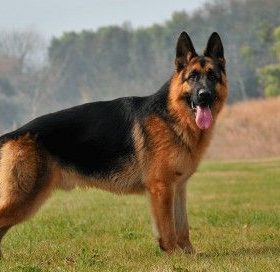 German Shepherd
German Shepherd Schillerstövare
Schillerstövare Austrian Pinscher
Austrian Pinscher Drever
Drever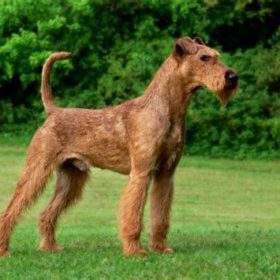 Irish Terrier
Irish Terrier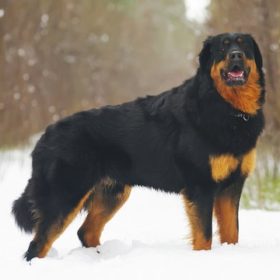 Buryat-Mongolian Wolfhound
Buryat-Mongolian Wolfhound